Glaucoma in pets is a serious eye condition that occurs when the pressure inside the eye, known as intraocular pressure (IOP), becomes elevated. This increased pressure damages the optic nerve, leading to vision loss and potentially blindness if left untreated.
At The Eye Specialist for Animals, Dr. Gladys Boo, Singapore’s only American Board-Certified Veterinary Ophthalmologist, provides glaucoma surgery for pets. With experience in managing glaucoma, Dr. Boo offers a range of treatment options for dogs, cats, and other animals. These options include procedures to manage IOP and, when necessary, enucleation (surgical removal of the eye) to alleviate pain and improve the pet’s quality of life.
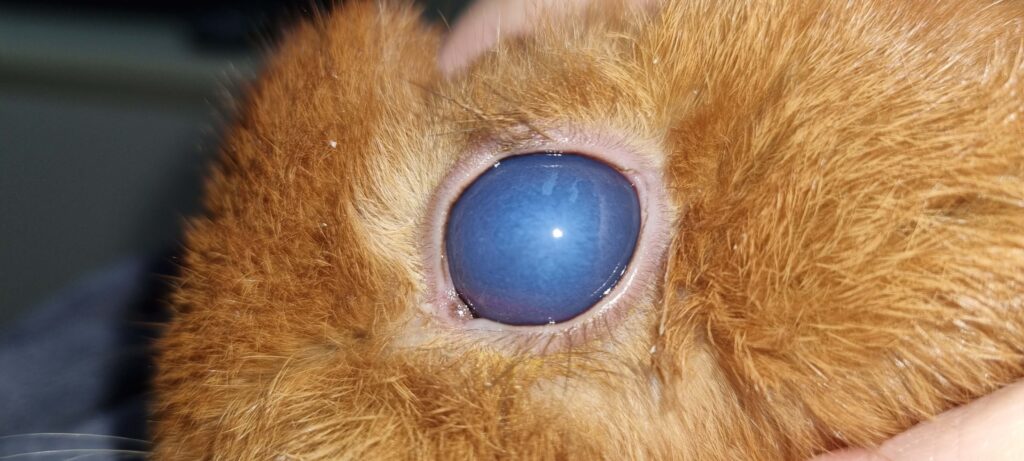
Glaucoma is a condition where the intraocular pressure (IOP) within the eye becomes elevated and may require surgery. Because of the increased pressure, the optic nerve becomes damaged, leading to vision loss or blindness. There are two types of glaucoma in pets:
Untreated glaucoma can lead to irreversible blindness and cause significant pain for your pet. However, glaucoma surgery for pets aims to control IOP and alleviate discomfort. What’s more, early diagnosis and appropriate glaucoma surgery for dogs or cats can help preserve vision and improve your pet’s quality of life.
Seek veterinary attention promptly if you notice these symptoms:
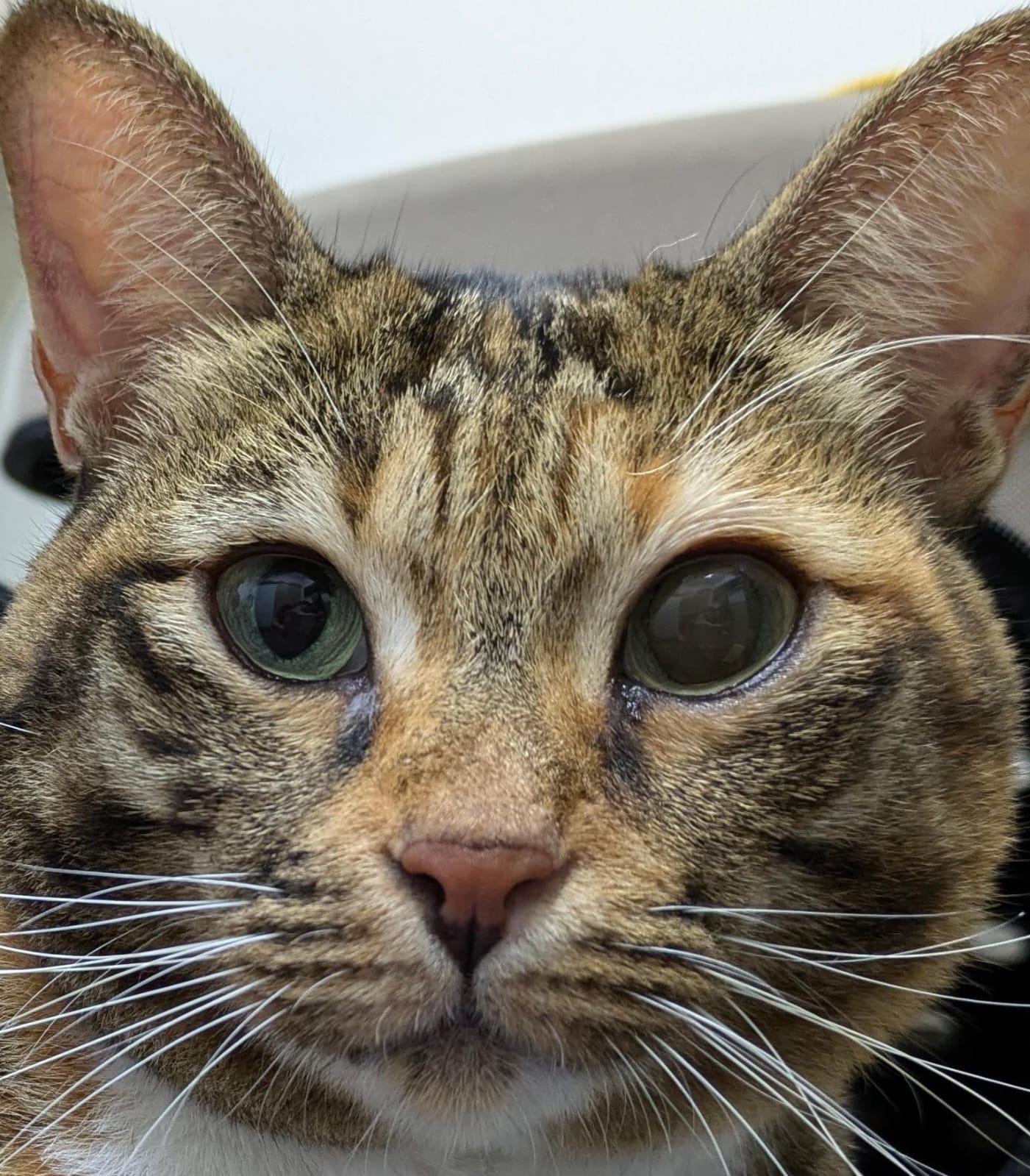
The glaucoma surgery process for dogs, cats, and other animals involves several key stages to ensure the best possible outcome:
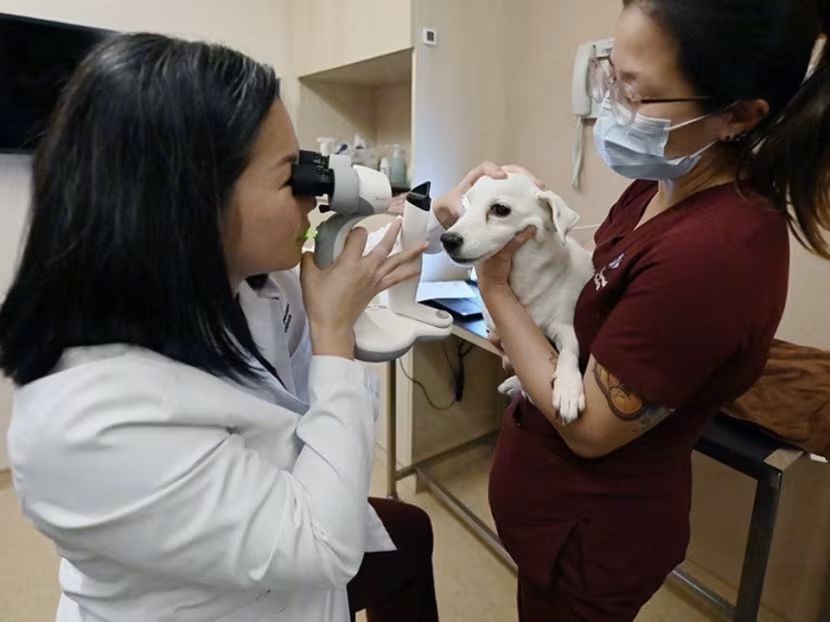
Before any glaucoma surgery can be considered, we conduct a thorough pre-surgery evaluation. This includes a complete pet ophthalmic examination to assess the overall health of the eyes and determine the severity of the glaucoma. Ocular diagnostic tests for pets, such as IOP measurements and gonioscopy, may be performed to evaluate the drainage angle of the eye. This evaluation helps us determine the most appropriate surgical approach for your dog or cat.
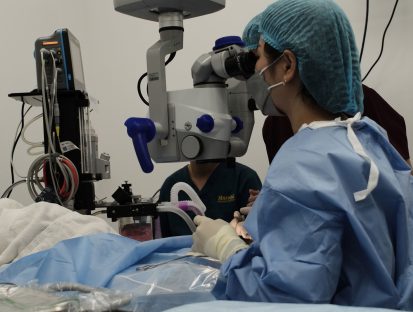
The surgical procedure for pet glaucoma surgery will vary depending on the type and severity of glaucoma. Options may include procedures to lower IOP, such as laser surgery or placement of a drainage implant. In advanced cases where vision cannot be saved, and the eye is causing significant pain, enucleation (surgical removal of the eye) may be recommended.
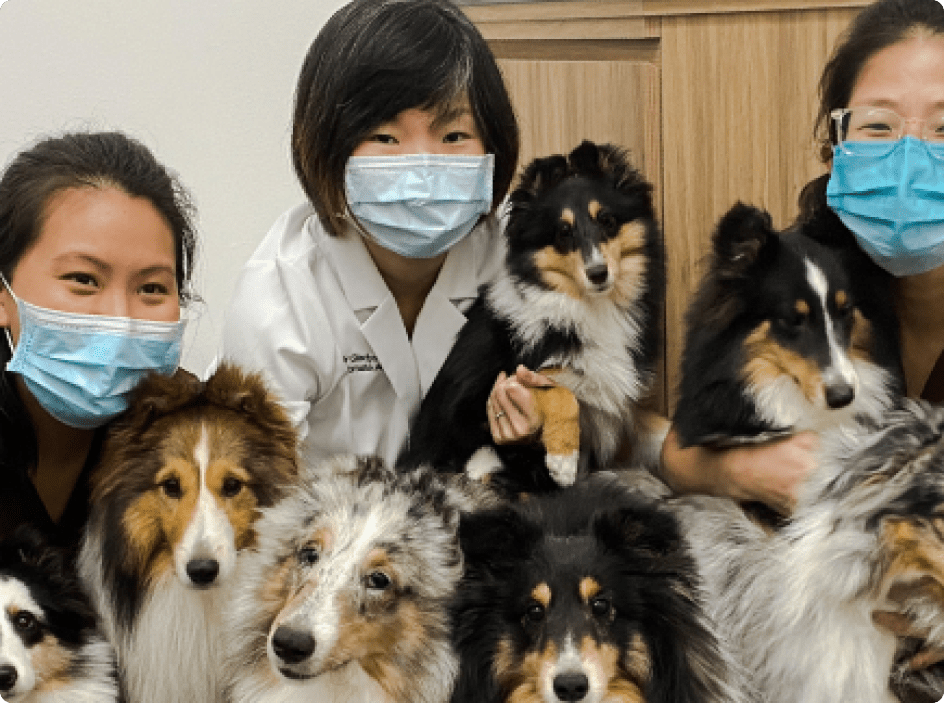
After the glaucoma surgery, your pet will be closely monitored as it recovers from anaesthesia. The veterinary team will pay close attention to their comfort and eye health, checking for any signs of complications such as swelling, bleeding, or discomfort. Depending on the specific procedure performed, your pet may need to stay in the clinic for a short observation period. Before you leave, you may be asked to schedule follow-up appointments for ongoing monitoring and assessment of the surgical outcome.
Following glaucoma surgery for your dog or cat, diligent aftercare is crucial for optimal healing and management of this condition. You will need to administer prescribed medications, such as eye drops, to help control intraocular pressure (IOP) and prevent infection. It’s also important to create a calm environment for your pet to minimise stress and prevent eye strain.
At the same time, remember to take your pet for follow-up appointments at The Eye Specialist for Animals to monitor IOP and assess the overall healing progress. Also, your pet will likely need to wear an Elizabethan collar (e-collar) to prevent them from scratching or rubbing the eye. Note that the recovery times and expected outcomes vary depending on the type of glaucoma surgery performed and the severity of the initial condition.
Concerned about your pet’s eye health? Schedule a consultation with Dr. Gladys Boo, the only American Board-Certified Veterinary Ophthalmologist in Singapore, at The Eye Specialist for Animals today. We offer a range of glaucoma treatment options for pets, including surgery for cats and dogs, to help manage this condition and preserve your pet’s vision.
Dr. Gladys Boo’s experience in glaucoma surgery extends beyond dogs and cats. She also provides eye care for a wide range of animals, including horses, farm and zoo animals, and exotic species. However, the surgical approach and treatment options may vary based on the specific needs and anatomy of each species.
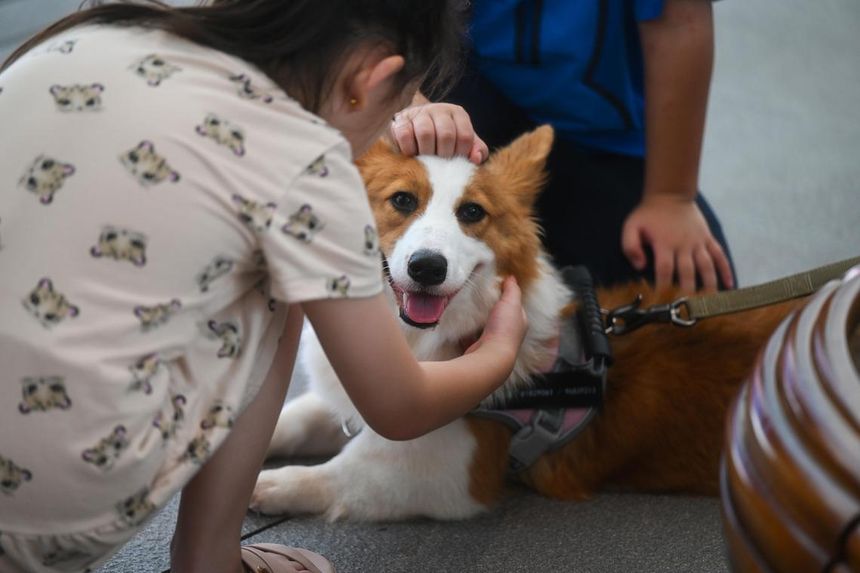
Glaucoma surgery for dogs often focuses on managing primary glaucoma, which is inherited and common in certain breeds. Surgical procedures may include laser surgery to improve fluid drainage or the placement of a drainage implant to reduce intraocular pressure (IOP). In severe cases, enucleation may be necessary to alleviate pain.
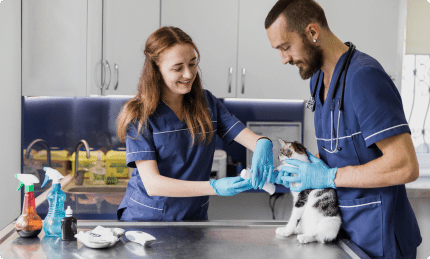
Cat glaucoma surgery frequently addresses secondary glaucoma, which develops due to underlying eye conditions like uveitis or trauma. Treatment options may include medications to manage IOP, laser surgery, or, in advanced cases, enucleation.
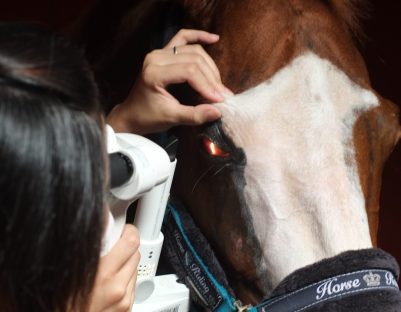
Glaucoma in horses can be challenging to manage due to their large eye size and unique anatomy. Dr. Boo offers medical procedures to control IOP and preserve vision when possible. She also provides glaucoma surgery for pets such as rabbits, adapting surgical techniques to their specific requirements.
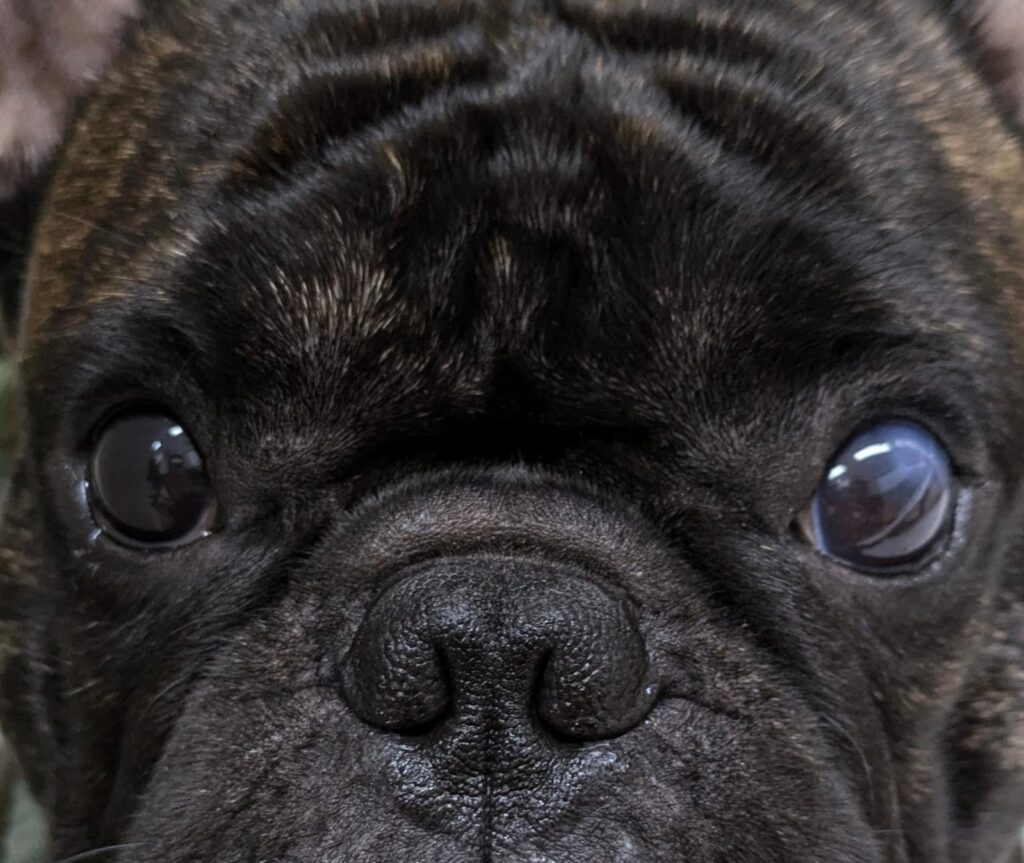
While glaucoma surgery for pets can significantly improve your pet’s comfort and quality of life, it’s important to be aware of potential risks and complications. For example, post-surgical inflammation is common but typically managed with medication. In some cases, intraocular pressure (IOP) may continue to fluctuate, requiring further treatment or adjustments to the management plan. If the glaucoma is advanced at the time of surgery, there is still a risk of vision loss despite the procedure.
The Eye Specialist for Animals believes in transparency and will discuss these risks with you thoroughly. While there are no guarantees, timely intervention and appropriate glaucoma surgery for dogs and cats can often help manage this condition effectively and preserve vision.
Signs of glaucoma in pets include red or cloudy eyes, squinting, dilated pupils, and apparent pain. If you notice any of these signs, seek veterinary attention promptly. Remember, early diagnosis is crucial for effective management or surgery of glaucoma in dogs and cats.
The success rate of glaucoma surgery for pets varies depending on factors such as the type of glaucoma, its severity, and the overall health of the pet. Generally, a significant percentage of dogs maintain vision after surgery. Our veterinary ophthalmologist will provide a personalised prognosis based on your pet’s individual circumstances.
The cost of glaucoma surgery for pets depends on the specific procedure, medications, and follow-up care required. To understand the fees associated with your pet’s particular case, it’s best to schedule a consultation with The Eye Specialist for Animals.
Without surgery or treatment, glaucoma can lead to blindness, severe pain, and other complications in dogs, cats, and other animals. Remember, early intervention is essential to prevent these outcomes.
The initial healing period after glaucoma surgery for pets is typically 10-14 days. During this time, your pet will need medication and close monitoring. Additionally, full recovery and vision stabilisation can take several weeks or months, depending on the specific procedure and individual pet.
Unfortunately, glaucoma in pets is rarely cured permanently. However, with appropriate treatment, such as surgery, the condition can be managed by controlling intraocular pressure and preserving vision. In most cases, lifelong monitoring and care are usually necessary.
Enucleation is the surgical removal of the eye, and it is considered when glaucoma is advanced, causing uncontrolled pain or blindness, and other treatment options have been exhausted. While surgery may seem drastic, it can significantly improve a pet’s quality of life by alleviating pain.
Reach out to us today via any of these channels